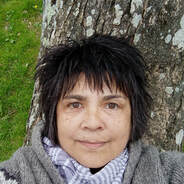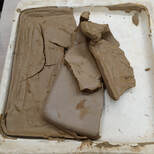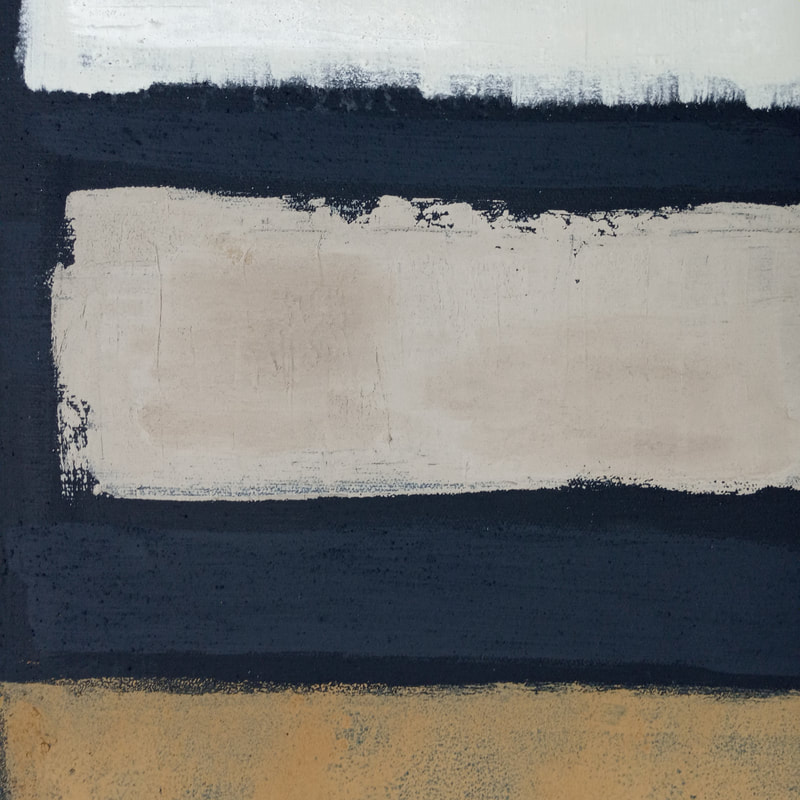DEBORAH WEYMONT

Deborah Weymont has recently retired from a 43 year career in special education She has worked both as a teacher and as an art therapist in London and Bristol.
Deborah is a full time member of Clay Shed Studio https://www.clayshed.co.uk/ and is enjoying having more time in which to develop her art practice.
As well as being a member of Hybrid artists group Deborah is a founding member of ‘Bristol Clay’ a group of women artists who exhibit together biannually.
https://www.instagram.com/bristol.clay/?hl=en -our next exhibition is in November 2023.
I have made art all my life and am mainly self-taught having dropped out of art school in the 1970's. I started ceramics in adult education classes and for the past 10 years I have been developing my interest in tiles and tile making as well as hand-building pots and sculptural pieces.
For the past year I have been working with ‘wild clay’ dug from common land and land enclosed by the crown, church and landed aristocracy. I dig surface clay which I process and use to make natural pigments, pastels, paints, clay bodies and glazes. I then make artefacts which invite us to see the world differently and tell new stories about our ‘green and pleasant land’.
My work is informed and inspired by the Right to Roam campaign and the Land Justice Network in the UK -within the context of broader debates around the social, emotional and environmental legacies of European colonialism.
Nick Hayes (2020) The Book of Trespass. Bloomsbury.
Guy Shrubsole (2019) Who Owns England? William Collins Books.
Sathnam Sanghera (2020) Empireland. How Imperialism has Shaped Modern Britain. Penguin.
...re-imagining the commons-one bucket of mud at a time...
Deborah is a full time member of Clay Shed Studio https://www.clayshed.co.uk/ and is enjoying having more time in which to develop her art practice.
As well as being a member of Hybrid artists group Deborah is a founding member of ‘Bristol Clay’ a group of women artists who exhibit together biannually.
https://www.instagram.com/bristol.clay/?hl=en -our next exhibition is in November 2023.
I have made art all my life and am mainly self-taught having dropped out of art school in the 1970's. I started ceramics in adult education classes and for the past 10 years I have been developing my interest in tiles and tile making as well as hand-building pots and sculptural pieces.
For the past year I have been working with ‘wild clay’ dug from common land and land enclosed by the crown, church and landed aristocracy. I dig surface clay which I process and use to make natural pigments, pastels, paints, clay bodies and glazes. I then make artefacts which invite us to see the world differently and tell new stories about our ‘green and pleasant land’.
My work is informed and inspired by the Right to Roam campaign and the Land Justice Network in the UK -within the context of broader debates around the social, emotional and environmental legacies of European colonialism.
Nick Hayes (2020) The Book of Trespass. Bloomsbury.
Guy Shrubsole (2019) Who Owns England? William Collins Books.
Sathnam Sanghera (2020) Empireland. How Imperialism has Shaped Modern Britain. Penguin.
...re-imagining the commons-one bucket of mud at a time...
Processing wild clay |
In relation to our exhibition theme of ‘Colour’ I have been exploring the many possibilities of working with the restricted colour palette of the earth in a series of paintings.
My paintings are inspired by the work of Mark Rothko and the simplicity of the visual language he developed through colour to express core human emotions. His 'colour field' paintings of layered and irregular, often rectangular areas of colour have provided me with a template for my own learning and reflection and development as a painter. And, unlike some of Rothko’s work my paintings will not fade because they are built up from multiple layers of lightfast ancient earth pigments!
I am also very grateful to Peter Ward https://peterward-artist-illustrator.co.uk/ for his generous sharing of his art practice and information about where to find pigments in Devon.
My paintings are inspired by the work of Mark Rothko and the simplicity of the visual language he developed through colour to express core human emotions. His 'colour field' paintings of layered and irregular, often rectangular areas of colour have provided me with a template for my own learning and reflection and development as a painter. And, unlike some of Rothko’s work my paintings will not fade because they are built up from multiple layers of lightfast ancient earth pigments!
I am also very grateful to Peter Ward https://peterward-artist-illustrator.co.uk/ for his generous sharing of his art practice and information about where to find pigments in Devon.
Work in Progress... pigments I have made.... mixing the pigment with binder....applying the paint to canvas...
...and below, details from paintings...
...and below, details from paintings...













